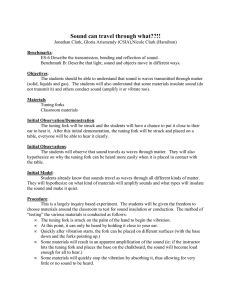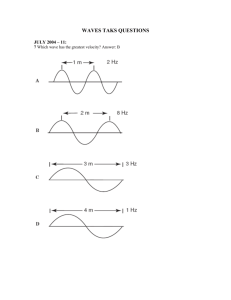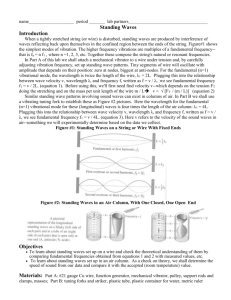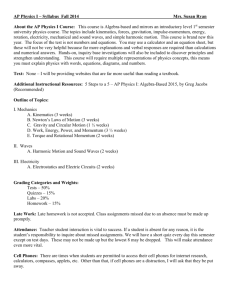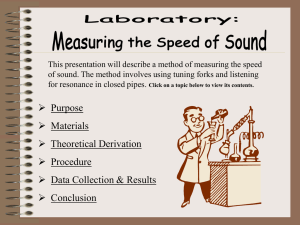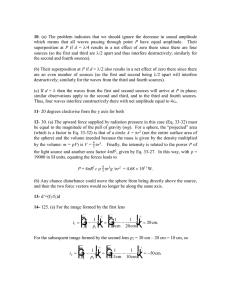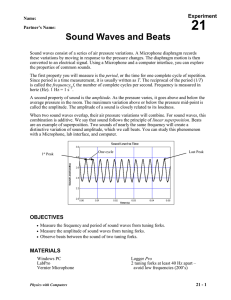Document
advertisement
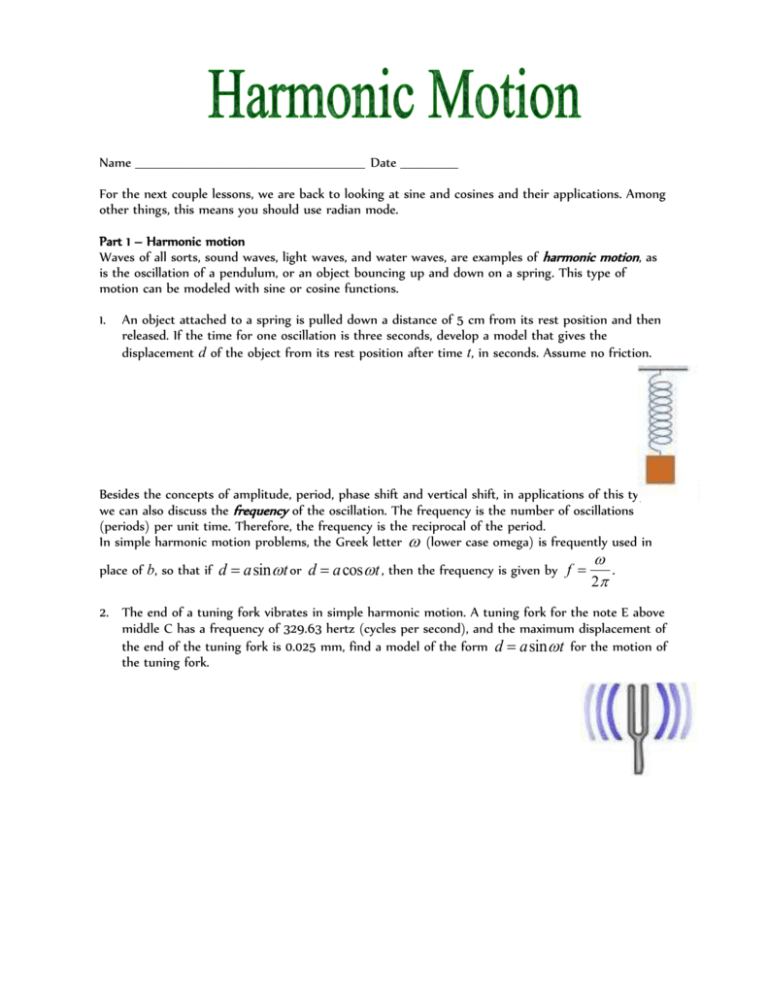
Name ____________________________________________________ Date _____________ For the next couple lessons, we are back to looking at sine and cosines and their applications. Among other things, this means you should use radian mode. Part 1 – Harmonic motion Waves of all sorts, sound waves, light waves, and water waves, are examples of harmonic motion, as is the oscillation of a pendulum, or an object bouncing up and down on a spring. This type of motion can be modeled with sine or cosine functions. 1. An object attached to a spring is pulled down a distance of 5 cm from its rest position and then released. If the time for one oscillation is three seconds, develop a model that gives the displacement d of the object from its rest position after time t, in seconds. Assume no friction. Besides the concepts of amplitude, period, phase shift and vertical shift, in applications of this type, we can also discuss the frequency of the oscillation. The frequency is the number of oscillations (periods) per unit time. Therefore, the frequency is the reciprocal of the period. In simple harmonic motion problems, the Greek letter w (lower case omega) is frequently used in place of b, so that if d = asin w t or d = acos w t , then the frequency is given by f = w . 2p 2. The end of a tuning fork vibrates in simple harmonic motion. A tuning fork for the note E above middle C has a frequency of 329.63 hertz (cycles per second), and the maximum displacement of the end of the tuning fork is 0.025 mm, find a model of the form d = asin w t for the motion of the tuning fork. Part 2 – Combinations of trig functions In the real world, sounds are almost always made up of waves of many different pitches (frequencies) put together. Thus we look at what happens when two sinusoids are added together. 3. Graph each of the following on your calculator and determine whether or not the function is a sinusoid. Also, determine the period of each function graphically. (a) f (x) = 5cos x + 3sin x (b) f (x) = cos5x + sin 3x (c) f (x) = 2cos 3x - 3cos2x (d) f (x) = 2cos ( 2p x ) - 3sin ( 2p x ) Based on Question 3, under what conditions is the sum or difference of two sinusoids also a sinusoid? In this case, what is the period? 4. Let f (x) = 5cos x + 3sin x . We know from Question 3 that the function is a sinusoid. (a) What is the period? (b) Use a graph to find the amplitude and phase shift to the nearest hundredth. (c) Write f in the form y = asin(bx + c) . Check your answer graphically. (d) Can you check your answer using the sin ( A + B ) identity?
